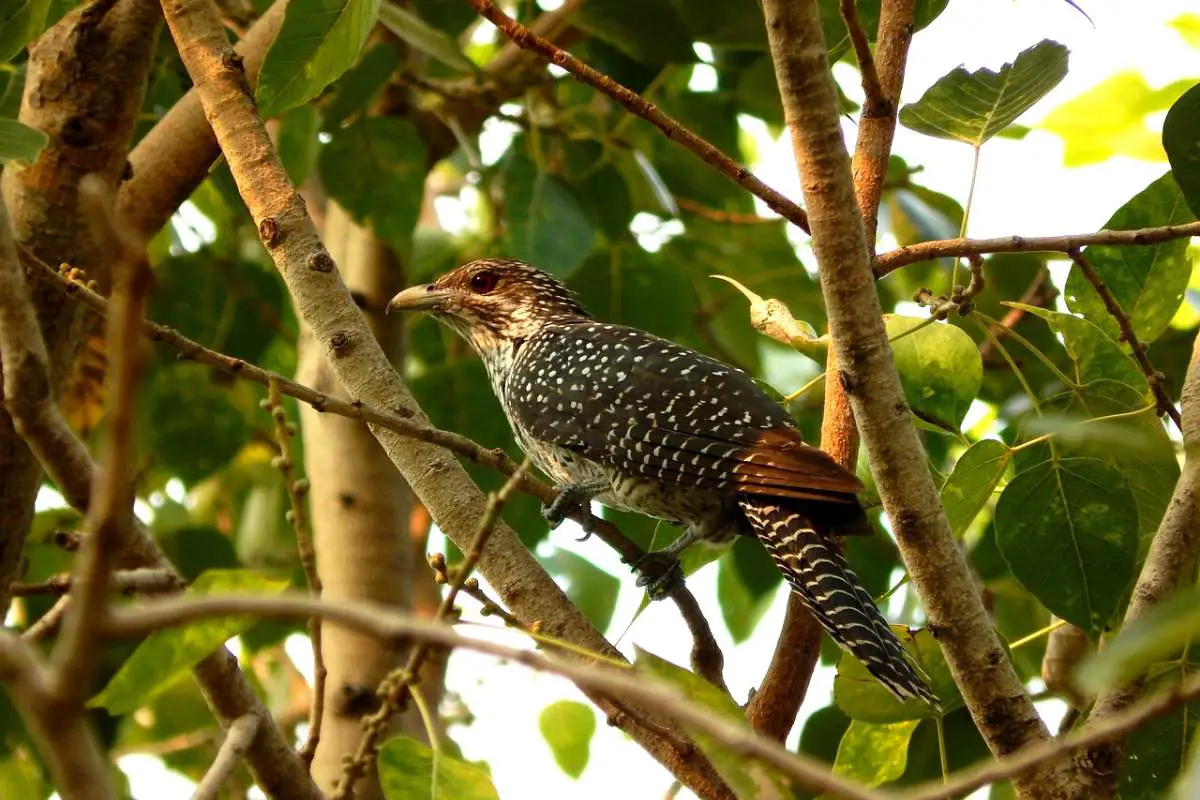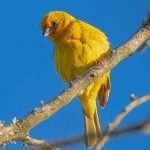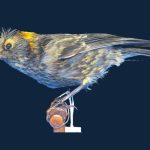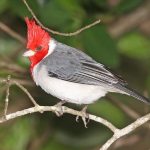Common Name: Common Cuckoo
Scientific Name: Cuculus canorus| Size | Diet | Range in Hawaii | Status in Hawaii |
|---|---|---|---|
| 12 in. - 14 in. | insects and other small invertebrates | Oahu, Kauai, and Big Islands | Least Concern |
The common cuckoo (Cuculus canorus) is a medium-sized bird species found throughout much of Europe, Asia, and Africa. It is a migratory species, with some populations wintering in tropical regions. The common cuckoo is known for its distinctive call, which is a repeated “cuck-oo” sound that is often heard in the spring and summer.
Common cuckoo
Appearance

It is a slim, long-tailed bird with a distinctive appearance. The adult common cuckoo has a grey-brown back, with black and white markings on its wings and tail.
Its underparts are white or pale grey, and it has a long, slender beak. Adult common cuckoos typically range in size from 12 to 14 inches in length and have a wingspan of around 20 inches.
Diet
It primarily feeds on insects and other small invertebrates, such as beetles, grasshoppers, flies, and moths. It will also consume small fruits and berries when they are available.
Behavior
The common cuckoo is a fairly secretive and inconspicuous bird, and it is not often seen or heard except during the breeding season, when it is more vocal and active. They are solitary bird, and it is not commonly seen in flocks. It is active during the day, and it spends much of its time foraging for food.
Nesting
The common cuckoo is a brood parasite, meaning that it lays its eggs in the nests of other bird species, leaving the incubation and chick-rearing to the host parents. The common cuckoo has a number of different host species, including birds such as reed warblers, meadow pipits, and dunnocks. The cuckoo’s eggs are often similar in appearance to the eggs of the host species, which helps to conceal the fact that they are not the host’s own offspring.
The common cuckoo typically lays a single egg in the nest of its host, although it may occasionally lay two eggs. The egg is usually laid in the early morning, and the cuckoo typically leaves the nest soon after laying the egg. The egg hatches within about two weeks, and the cuckoo chick is larger and more developed than the host’s own chicks. It often pushes the host’s eggs or chicks out of the nest, ensuring that it receives the majority of the food brought to the nest by the host parents.
The common cuckoo chick grows quickly and fledges (leaves the nest) within a few weeks. Once it has fledged, the cuckoo chick is on its own and is no longer dependent on the host parents for food or care. The common cuckoo does not build its own nest or rear its own young; it relies on the efforts of its host parents to raise its offspring.
Habitat
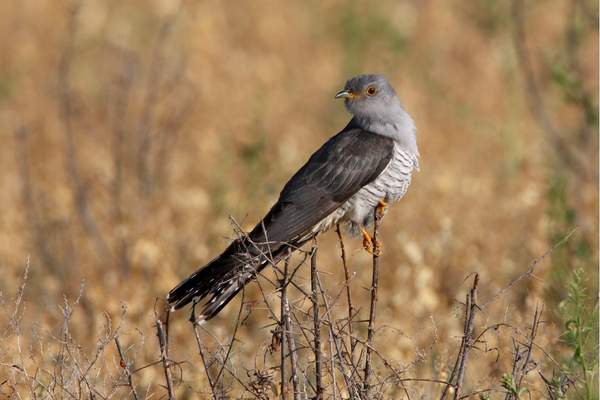
It is a bird of open habitats, such as grassland, meadows, and agricultural land. It is typically found in areas with a mix of trees, shrubs, and open areas, and it is often found near water.
Range
In Hawaii, the common cuckoo is likely to be found on the larger islands, including Oahu, Kauai, and Big Island, during the spring and summer months, as it migrates to the state to breed. It is not known to be a common or abundant species in Hawaii, but it may be seen occasionally by birdwatchers and other nature enthusiasts.
Conservation Status
The common cuckoo is not considered to be a threatened or endangered species. It is classified as a species of “Least Concern” by the International Union for Conservation of Nature (IUCN).
Interesting Facts
1. A generalist feeder
The common cuckoo is a generalist feeder, meaning that it feeds on a wide variety of different types of food.
2. They are a long-distance migrant
The common cuckoo is a long-distance migrant, and it can travel thousands of miles during its annual migration.
Frequently Asked Questions
Which common cuckoo calls male or female?
Both male and female common cuckoos are known for their distinctive calls, which are a series of repeated “cuck-oo” sounds. In general, male common cuckoos are more vocal than females, and they are more likely to be heard calling during the breeding season, while female common cuckoo is less vocal and is less likely to be heard calling.
Why don’t common cuckoos raise their own babies?
There are a few reasons why cuckoos have evolved this behavior. One is that it allows the cuckoo to conserve energy and resources that would otherwise be spent on building a nest and raising chicks.
Cuckoos may engage in brood parasitism as a way to increase the chances of their offspring surviving to adulthood. Because the cuckoo’s eggs are often laid in the nests of other species, they are less likely to be detected and rejected by the host birds. This means that the cuckoo’s eggs are more likely to hatch and the chicks are more likely to survive to fledging.
How long does common cuckoo live?
The lifespan of a common cuckoo can vary depending on a number of factors, including the individual bird’s genetics, diet, habitat, and exposure to predators or other threats. In general, however, common cuckoos have a lifespan of about 3 to 5 years in the wild. Some cuckoos have been known to live longer, with some individuals reaching the age of 7 or 8 years.
